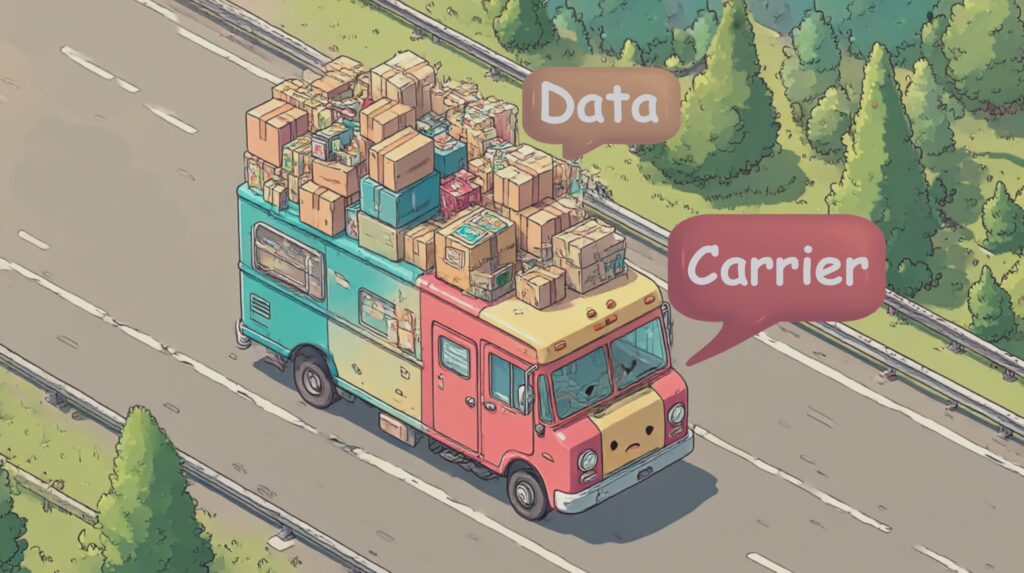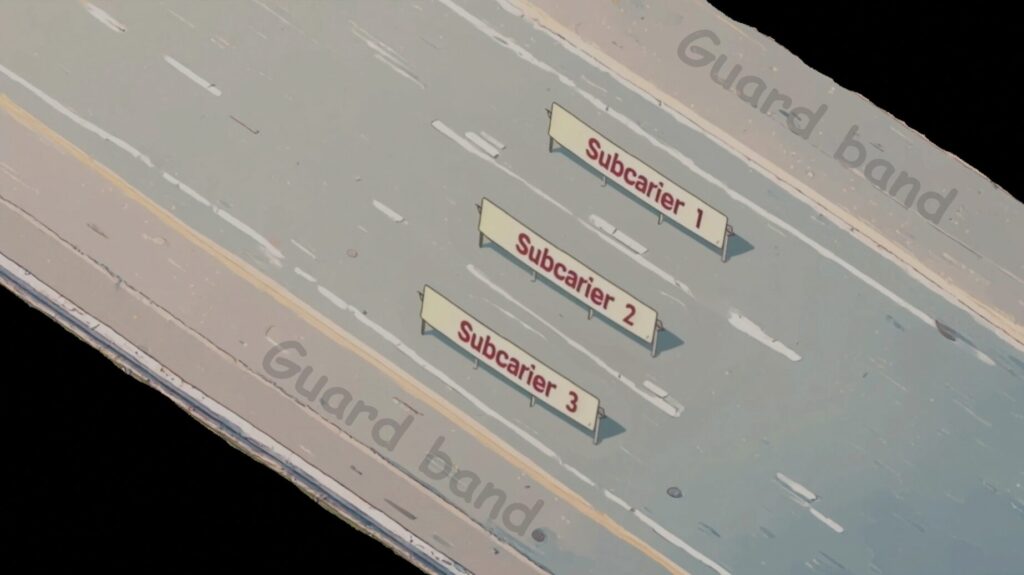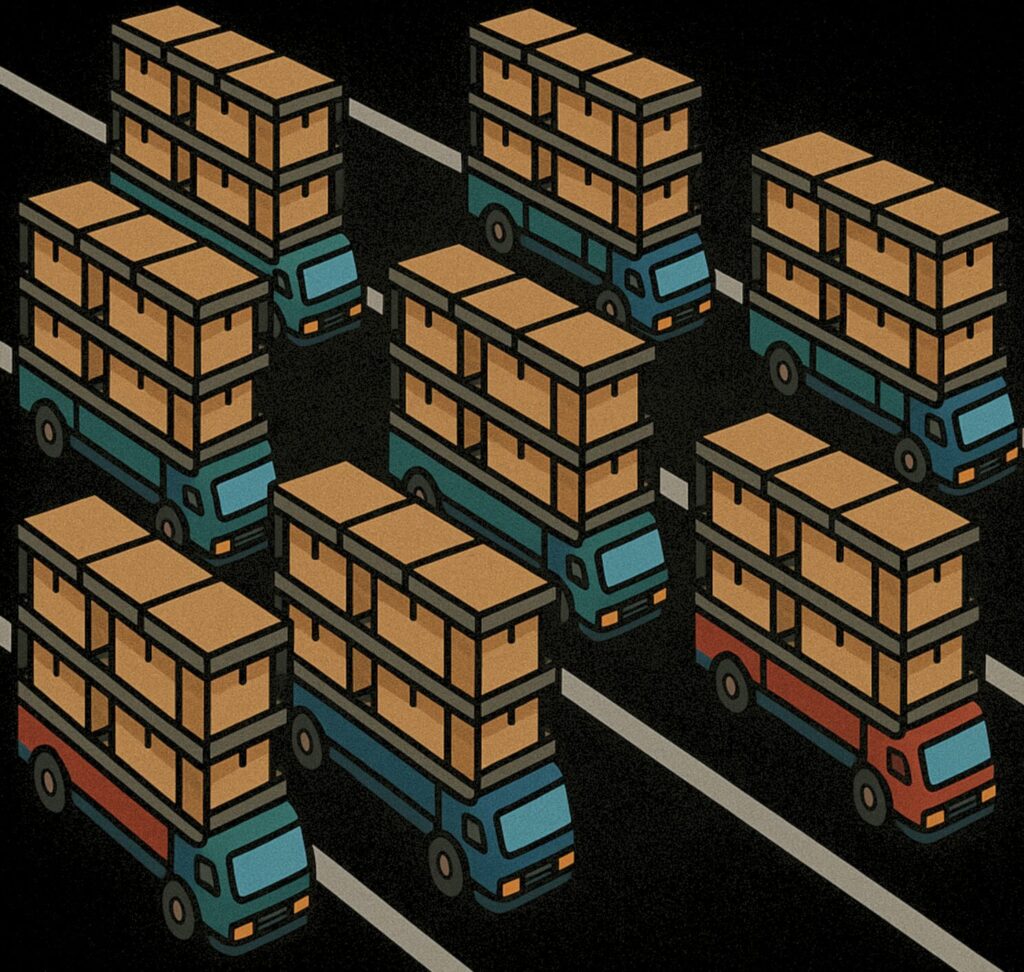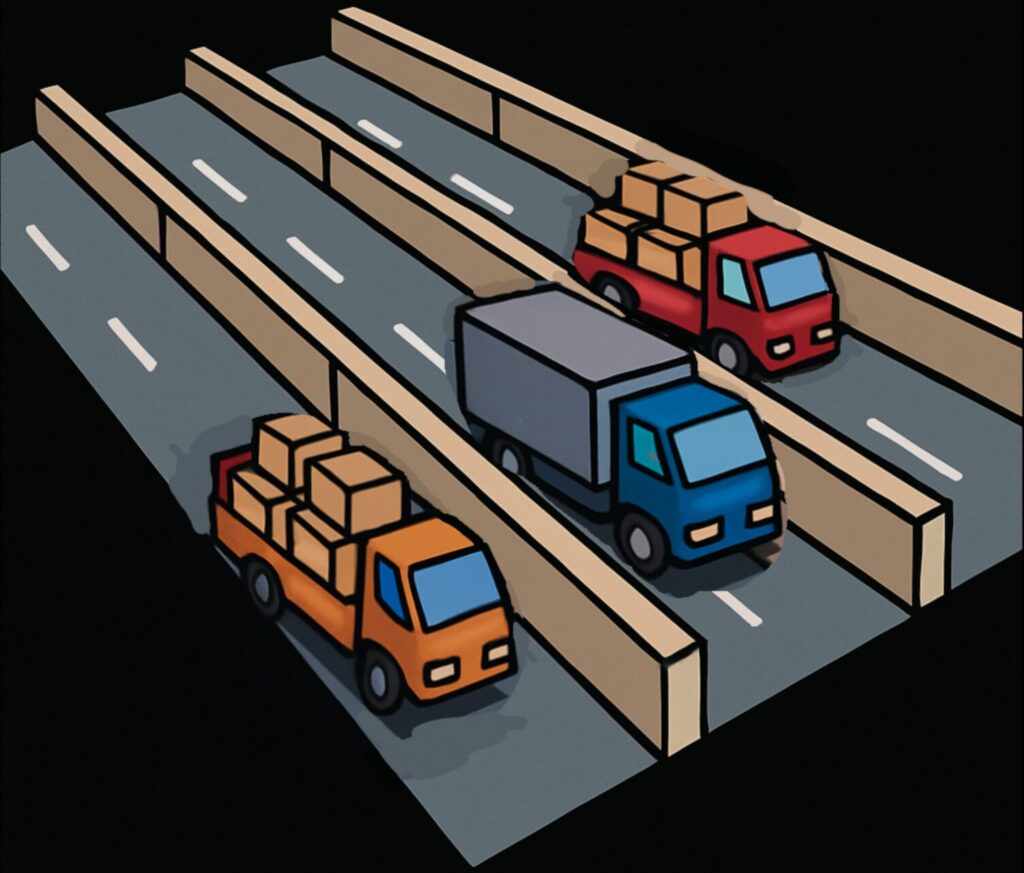Ever wondered how your phone streams movies without buffering even when everyone’s online? Or how Wi‑Fi juggles a houseful of gadgets without breaking any connection? The secret sauce is a clever tech called OFDM (Orthogonal Frequency Division Multiplexing). I know—it sounds intimidating. But stick with me. I will explain it using a simple story: a highway full of data‑hauling trucks.
Watch the full video lecture below to see these concepts in action!
One Crowded Lane vs. a Superhighway

Old‑school delivery:
Picture sending your digital data (those zeros and ones) in a single file down one narrow lane. To go fast, that lone lane driver has to speed like crazy. One glitch—maybe an accident or radio interference—and the whole lane jams up. Data stalls and stalls. Sound familiar?

Modern solution:
OFDM transforms that risky single lane into a multi‑lane superhighway. Instead of one overloaded channel, you get dozens, hundreds, or even thousands of parallel “subcarrier” lanes. Each one carries a smaller share of data. The result? Smooth traffic flow and and built-in resilience to interference.

Imagine a fleet of little trucks, each on its own lane (subcarrier). Each truck hauls a load of data packages. Even if each truck drives a bit slower, the total haul skyrockets because they all move together. In fact, 5G networks can run over 4,096 of these subcarrier lanes side by side.

Double‑Deckers on the Data Road
Want to boost your haul even more? Think double‑deckers. OFDM often uses a trick called QAM (Quadrature Amplitude Modulation).
It’s like loading each double-decker truck with two decks of parcels. The lower deck acts as the cosine wave carrier, while the upper deck serves as the sine wave carrier. They travel together in the same truck, perfectly separated, yet doubling the data each vehicle carry.

Invisible Barriers: Orthogonality
All these lanes are packed close. Won’t they interfere? Not when they’re Orthogonal. Picture invisible barriers that keep trucks from drifting into each other’s path.
In OFDM, the frequencies are spaced so precisely that when your device tunes into one subcarrier lane, all the others cancel out. It’s like picking out one instrument in an orchestra—your phone zeroes in on just the tune it needs.

Building the Highway without Breaking the Bank
You might think thousands of subcarriers need thousands of expensive generators (Oscillators). Wrong. OFDM uses smart digital math—an Inverse Fast Fourier Transform (IFFT)—to bundle up all those lanes into a single signal. It’s like sending data across thousands of lanes simultaneously in a single shot—neatly bundled using digital math before hitting the road.
On the receiving end, your phone runs a Fast Fourier Transform (FFT) to unpack everything back into the individual subcarriers. These calculations are lightning‑fast on modern chips, so you get top speeds without a huge price tag.

Why OFDM Matters Today
- Fast: Parallel lanes carry huge amounts of data in one go.
- Reliable: If one lane has interference, the others keep running.
- Efficient: Orthogonality means tight packing (less frequency separation between subacarriers) with no collisions.
- Affordable: Digital IFFT and FFT transforms replace costly analog hardware.
This idea isn’t brand‑new. In fact, a 1966 research paper by Robert W. Chang first described a similar concept. But back then, hardware couldn’t keep up. Today’s powerful processors made OFDM the backbone of modern wireless standards like Wi‑Fi, 4G LTE, and 5G NR. It’s even used in digital TV systems (DVB‑T) and powerline communications.

When you watch your favourite shows or hop on a crystal‑clear video call, you’re riding the OFDM superhighway. Thousands of lanes. Millions of data packages. All delivered smoothly, thanks to some smart math and a fleet of digital trucks.
Road trip complete—enjoy your seamless connection!

Leave a Reply